
Playing Love: Printed Board Games at Waddesdon
What better way to celebrate a lockdown St. Valentine’s Day than to discover some of our rare 18th- and 19th-century flirtatious love-themed board games. Nothing says romance like playing at love from the safety of your own home!
People have always played games. How people play may have changed and is still changing, with new technology, but the essential idea of play as a form of recreation has always remained the same. The rise of printmaking allowed board games to spread through all social classes, alongside playing cards and lottery tickets.
Most of the games in the collection are variants of the ‘jeu de l’oie’ (Game of the Goose), a game of chance dating back to the late 16th century, similar to Snakes and Ladders. It is a spiral race game played with dice and tokens, in which each player is represented by an individual marker. One travels along the board depending on the roll of the dice, landing on either helpful squares, which double the player forward, or obstacles which incur punishments such as fines, missed turns or even going back to the start. The winner is the first to land on the last square and wins the tokens put into the pot throughout the game.
Publishers in the 18th century saw great potential in the form of the Game of the Goose, adapting it to all sorts of themes, from educational games for children to recreational fun with themes exploring theatre, fashion and love. Its popularity spread throughout Europe, reaching its height in 18th-century France.
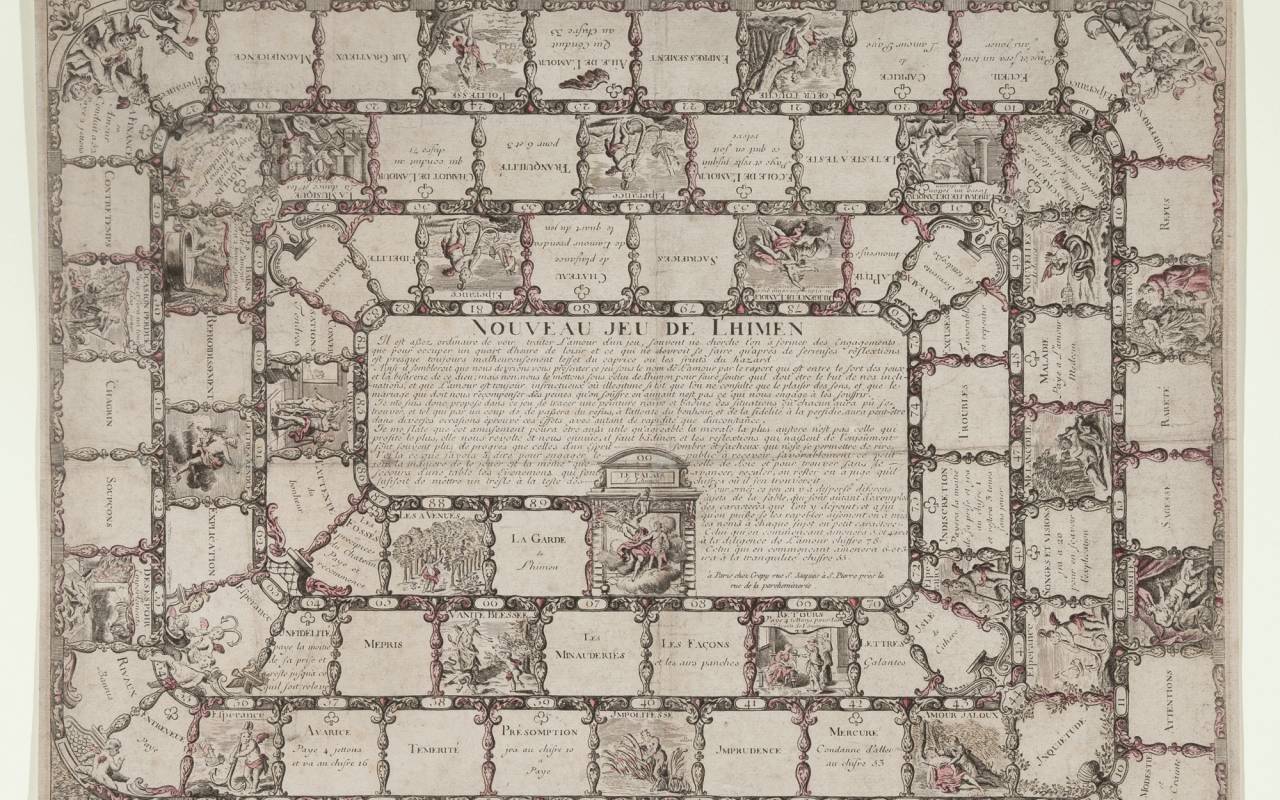
Let us begin with the New Game of Hymen (Nouveau Jeu de l’himen), c. 1725-1750, named after the Greek god of marriage ceremonies. The game’s narrative is typical of the period in its moralising approach to love, from the flirtatious beginnings of an affair through to the virtuous end goal of marriage. This game is played based on the format of the Game of the Goose. The introduction printed in the middle claims that love with all its uncertainty and changeable qualities is too often treated as a frivolous game of chance. The game promotes itself as a successful educational tool, one that can teach its moral lessons about love and marriage through the fun and enjoyment of play. The introduction explains that the game is named after Hymen, god of marriage, because marriage should be the virtuous goal and not only love itself. The game begins with Vision (the first sight of a potential love), moving through squares like Admiration, Hope, Indiscretion, and Tender Conversations with the final square of The Palace of Hymen, as a representation of Marriage.
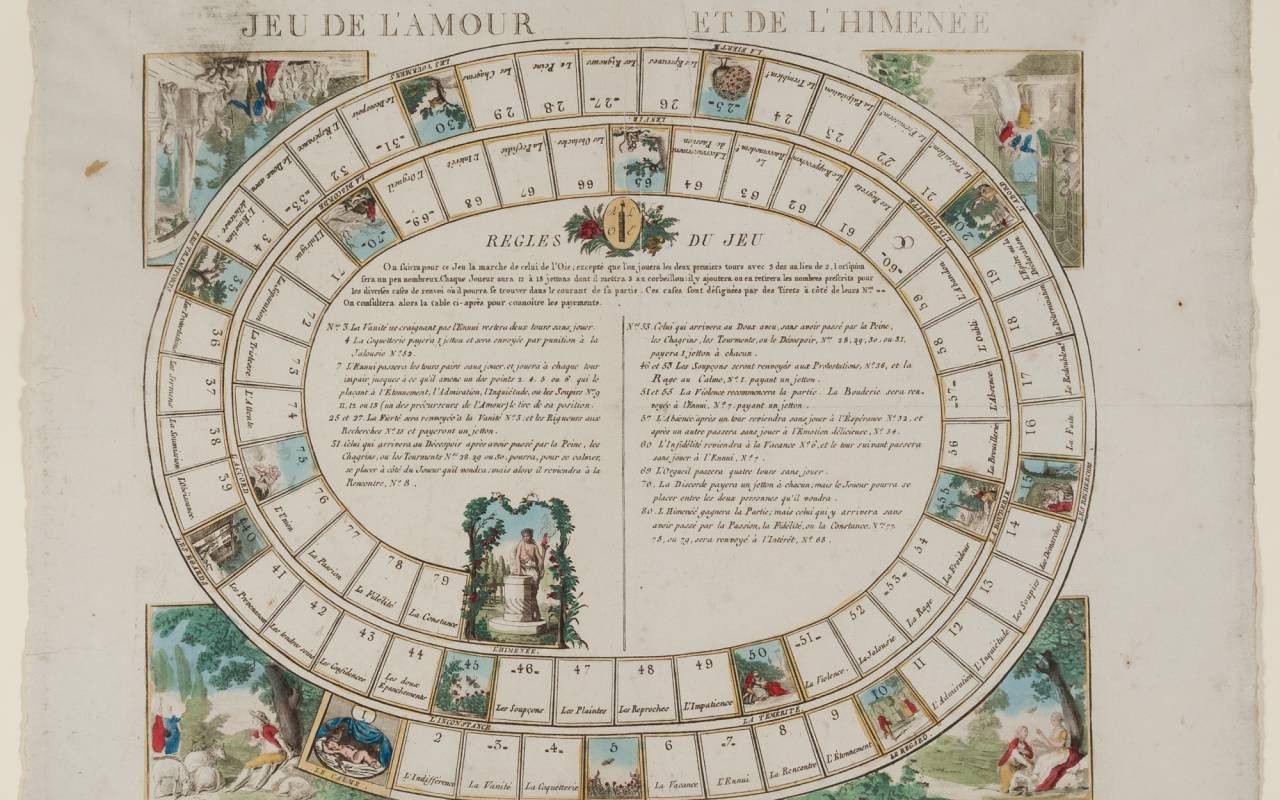
This theme of love and marriage was very popular throughout the 18th century, which produced many variations of this type of game. A later and much simpler version is the Game of Love and Hymen (Jeu de L’amour et de l’Himenée), from the late 18th century or early 19th century. Based on the same principles as the previous example – but without a poetic and moralising introduction – the rules are simply printed in the middle of the spiral. The game begins with Calm and then moves through the emotional rollercoaster that love can be, from Worry, to Jealousy, and eventually to Passion, Fidelity and the winning and final square representing Hymen, god of marriage.
Within the collection of board games at Waddesdon, acquired by Baron Ferdinand de Rothschild (1839-1898), there are also a number of allegorical maps which would have been enjoyed in much the same way as the games, as conversation pieces and for amusement. The games allow you to move physically through different states and emotions related to love and marriage, as you move along the board. The allegorical maps act in the same way, projecting love and its complexities onto fictitious landscapes, allowing people to visualise their paths and to better understand the possible dangers and pitfalls along the way.
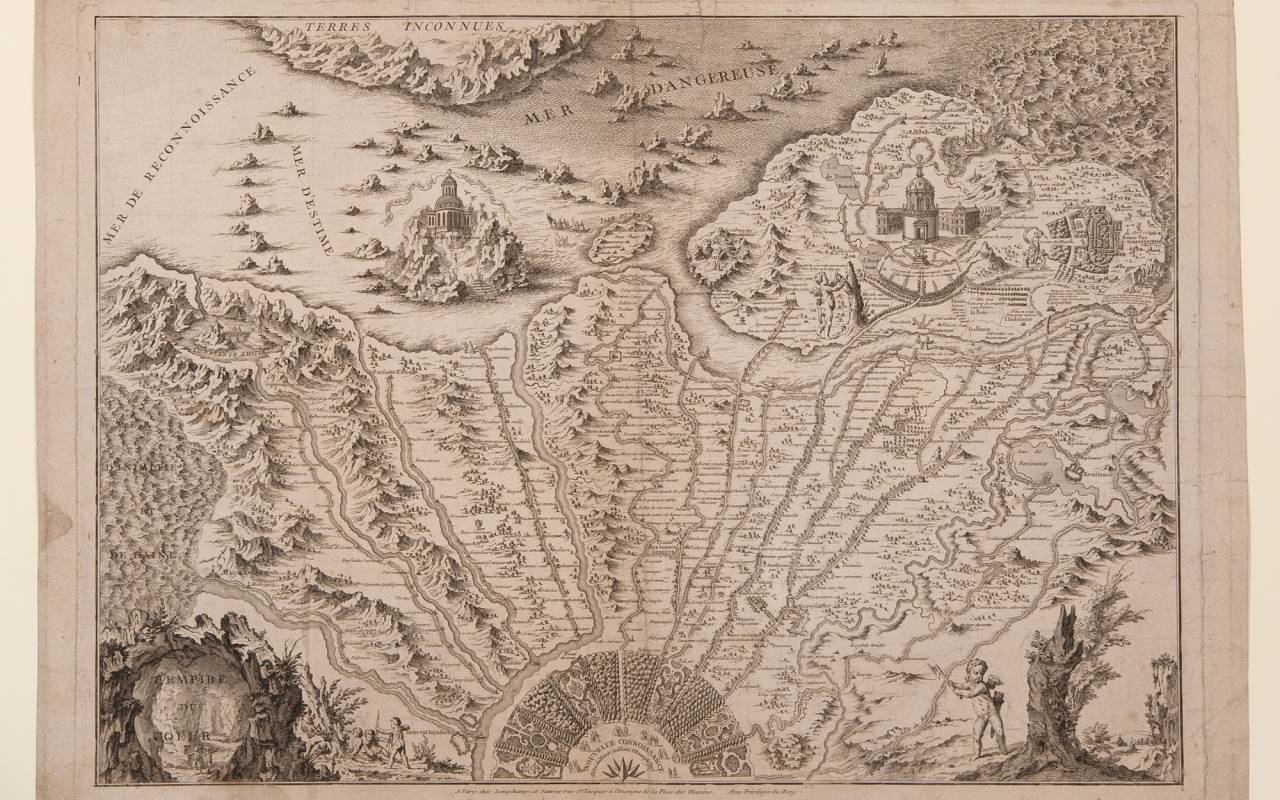
The Empire of the Heart (L’Empire du Cœur), published in 1752, reveals a complex landscape. Beyond the manicured gardens where male and female figures are shown together, is a treacherous landscape into which they will venture. The paths lead towards two temples representing true and false love. Beyond these temples are the ever more treacherous ‘Terres Inconnues’ (Unknown Lands) and ‘Mer Dangereuse’ (Dangerous Sea).
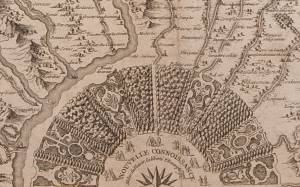
This map recalls one of most popular allegorical maps of the time, by the writer and salon-hostess Mademoiselle de Scudery (1607-1701), who devised the Carte de Tendre with her friends. Discussions on friendship and relationships led to the development of the idea of the land of Love (Tendre), with de Scudery as its monarch and her friends moving throughout the allegorical landscape with the aim of becoming citizens of the country.
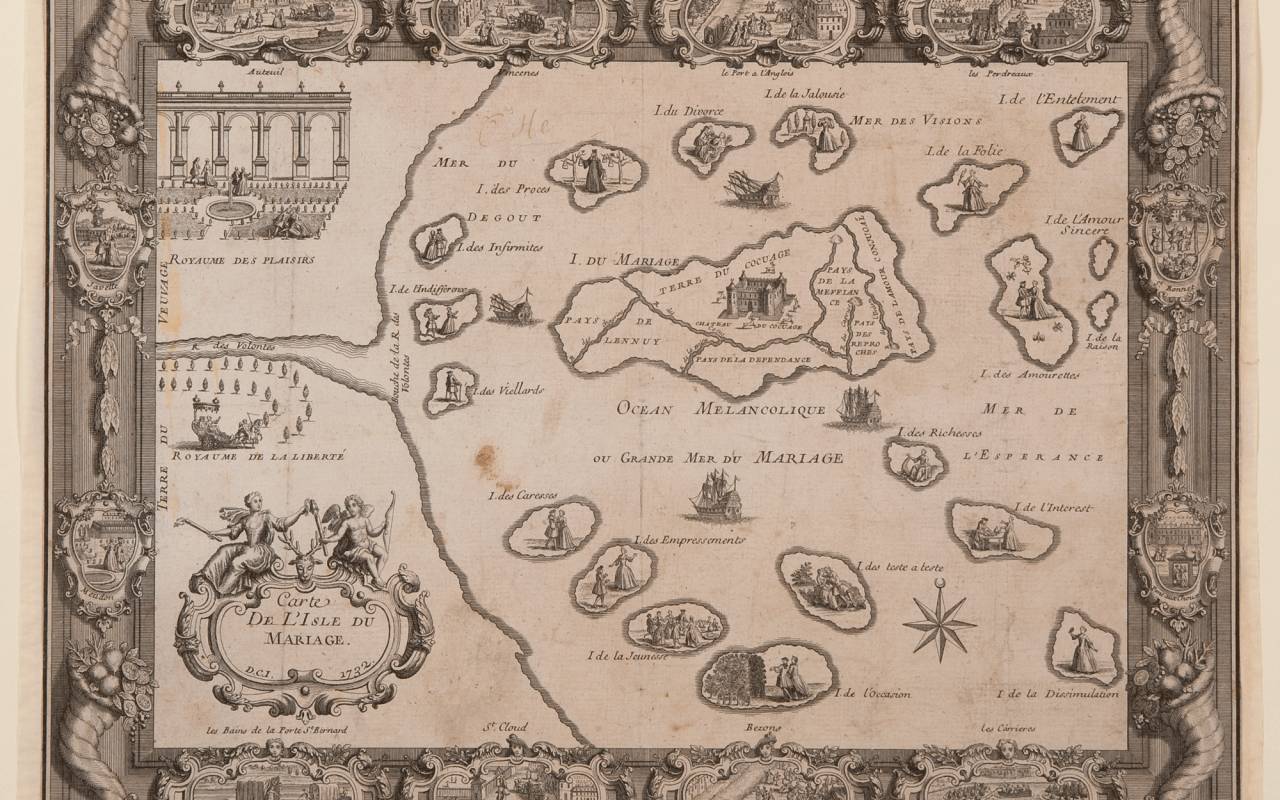
Unlike the Empire of the Heart, with its far reaching unknown lands and dangerous seas, the Map of the Island of Marriage (Carte de L’isle du Mariage) from 1732, reveals a contained environment. The journey leads by river from the ‘Virgin Lands’ through the ‘Kingdom of Freedom’ and the ‘Kingdom of Pleasures’ out into the ‘Ocean of Melancholy’ or the ‘Grand Sea of Marriage.’ The central island representing marriage is split into domains that include ‘Lands of Courage’, ‘Boredom’ and ‘Dependence’. On the outskirts, the ‘Land of Conjugal Love’, is bordered by ‘Suspicion’. Around the Island of Marriage are smaller islands invoking the progress of a romantic relationship, beginning with the first encounters, ‘Island of Occasion’, then the ‘Island of Madness’ and finally ‘Divorce’ and ‘Old Age’. The border of the map is decorated with pleasure gardens and country retreats where encounters might be made that could lead to such a journey.
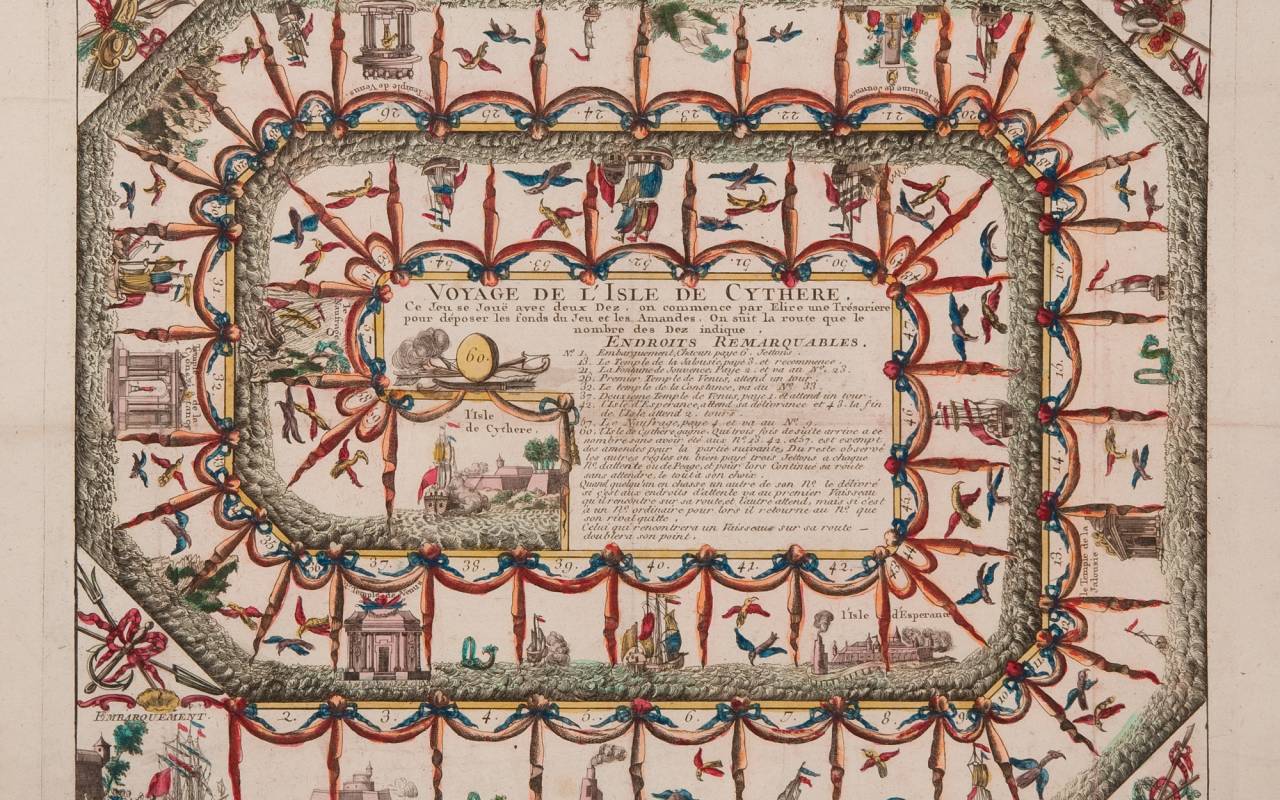
Like the Map of the Island of Marriage, The Game of a Voyage to the Isle of Cythera, c. 1780, also visualises the romantic landscape as a treacherous seascape. Each player must sail the seas, encountering obstacles along their way such as shipwrecks and temples of Jealousy, and Venus, in order to arrive at the final square – the Island of Cythera –a Greek island which was thought to be the birthplace of Aphrodite, the goddess of love. The first square of the game shows a group of male and female figures boarding their ship for the island of Cythera. This subject was made popular in the 18th century with the painting Pilgrimage to Cythera by the French artist Antoine Watteau (1684-1721), which he submitted to the Academy of Painting and Sculpture in Paris as his reception piece in 1717. The painting was so successful that he painted a second version. The original is now at the Louvre Museum in Paris. Pilgrimage to Cythera | Louvre Museum | Paris. These games reveal how the arts and wider culture such as theatre and fashion influenced Parisian publishers even in the production of relatively inexpensive and ephemeral printed board games.
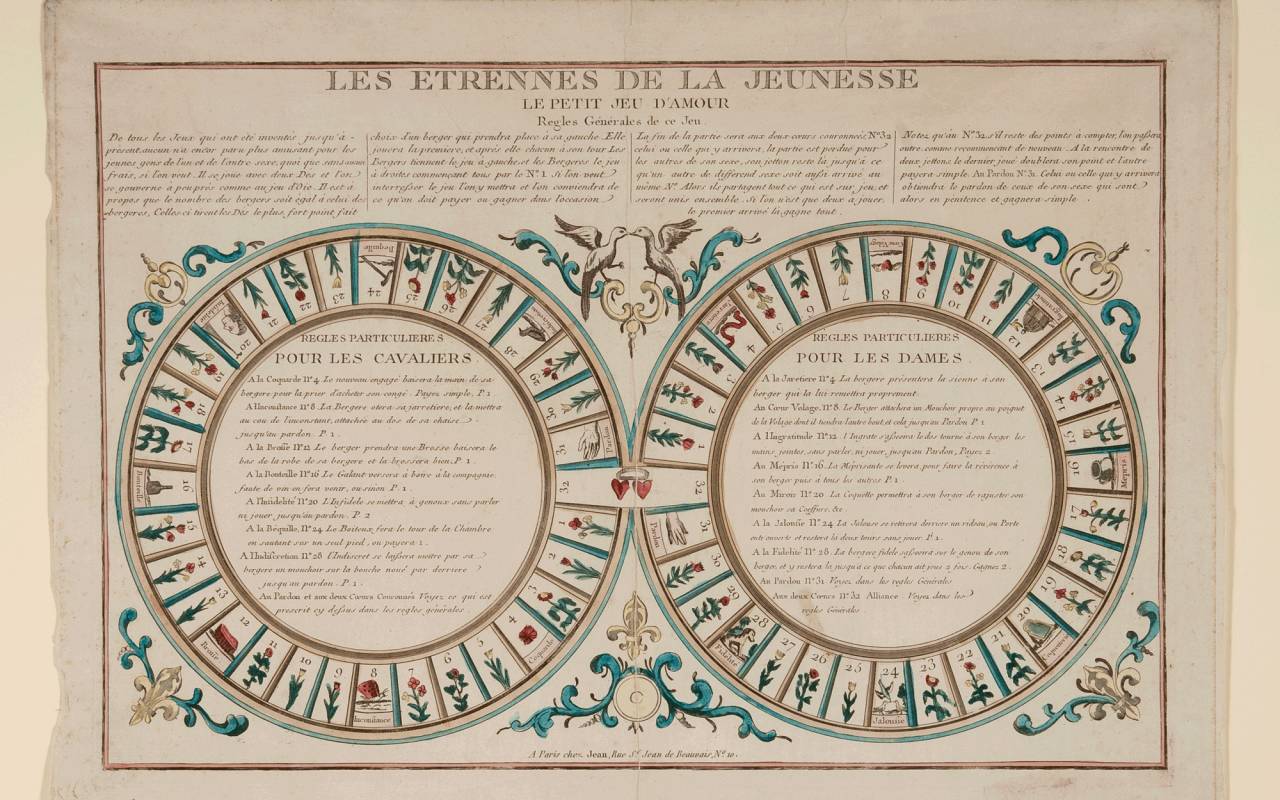
The Gifts of Youth, The Little Game of Love first printed in 1713 with this copy dating from between 1814 and 1829, is a variance on the Game of the Goose and an example of how the ideas explored in the allegorical maps are reflected in new games involving both sexes. Here we find a game in which young men and women are encouraged to play together. Each have their respective circles and are partnered up with a member of the opposite sex. This is a participatory game, not only does the player encounter setbacks and helpful spaces on the board but the rules stipulate that the partners must act out punishments on each other, such as a woman tying her partner to his chair with her garter. The game’s rules state that never before has there been a game that has provided so much joy and pleasure to the young. Despite all of the flirtatious activities encouraged by the games forfeits, the goal is once again marriage. The game is won by a couple when they respectively land on the final square with the two crowned hearts. Both players are united and share their winnings evenly representing the virtuous union of marriage.
These games and allegorical maps are quite revealing about the way people thought about love and marriage, not so much has changed since the 18th century. Players enjoyed flirtations but were also aware of the dangers of lust and heartbreak. It was a much more precarious situation for women – with their virtue to protect at all costs. Marriage was presented as the ultimate goal, justifying and seemingly excusing some of the more risky flirtations one might encounter along the way.



